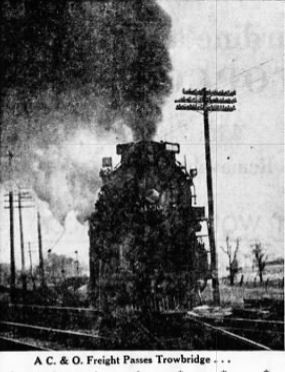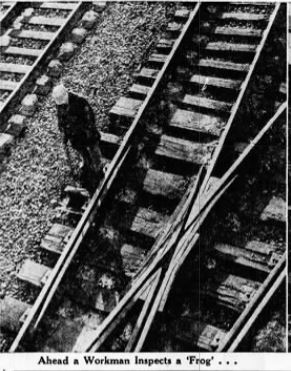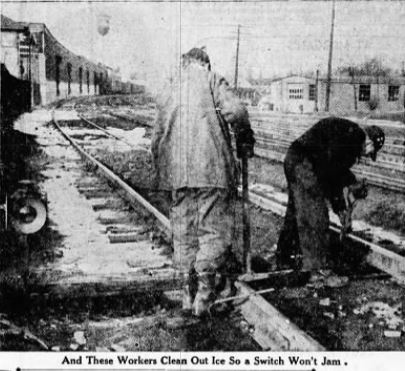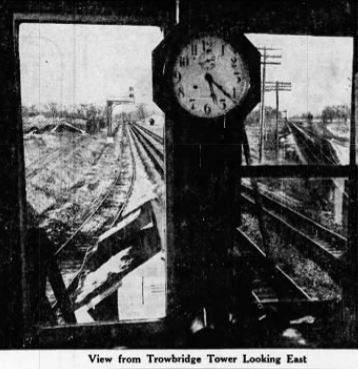- Details
- Hits: 1024
Article: Unsung Heroes - Crews Keep Constant Vigil On Rail Routes - 1949
By Dick Frazier, Lansing Journal Staff Writer, March 13, 1949

Harry O'Brien, veteran yard master for the Michigan Central railroad here, thus describes the "red tape" involving a freight train as it passes through the capital city:
Let's assume that a west-bound freight is approaching Lansing. The train is just passing the Williamston freight yards, on the Chesapeake and Ohio road.
As soon as the train clears the yard office at Williamston, the operator there tells the operator at Trowbridge (southeast of Lansing) that the train has cleared his yards. The message is carried over a loud-speaker that is functioning 24 hours a day. Trowbridge is the intersection of the Grand Trunk Western and the Chesapeake and Ohio railroads just west of Harrison road in East Lansing.
Check Charts

Now, let's get back to our westbound freight. The Trowbridge operator knows it will take about 15 minutes for the train to come from Williamston. If more than that amount of time lapses and the train doesn't come into sight, the operator can notify Williamston so that a check can be made. If a train is forced to stop between stations because of mechanical trouble, the conductor can notify the nearest station from telephone boxes situated about one mile apart all along the line.
Green Light
When the westbound freight approaches Trowbridge and the crossing is clear, the operator, from his station near the crossing, puts up a green signal which permits the train to cross. The signal is red the rest of the time and all approaching trains must stop unless the signal is changed.

The Michigan Avenue operator notifies the operator at the Grand River avenue crossing [North Lansing] as the train clears his station, and the Grand River avenue operator must check his charts and tables before permitting the train to leave the city. He in turn notifies the C&O dispatcher at DeWitt road who must check the main line schedule between Lansing and Lake Odessa before allowing the train to enter the single track.
Phone Speed Up
Use of the telephone in recent years has speeded up the dispatching of trains. Previously, the telegraph was used and misinterpretation of signals often led to confusion and delay.

[Lansing State Journal, Lansing, Michigan March 13, 1949]
Bibliography
The following sources are utilized in this website. [SOURCE-YEAR-MMDD-PG]:
- [AAB| = All Aboard!, by Willis Dunbar, Eerdmans Publishing, Grand Rapids ©1969.
- [AAN] = Alpena Argus newspaper.
- [AARQJ] = American Association of Railroads Quiz Jr. pamphlet. © 1956
- [AATHA] = Ann Arbor Railroad Technical and Historical Association newsletter "The Double A"
- [AB] = Information provided at Michigan History Conference from Andrew Bailey, Port Huron, MI

